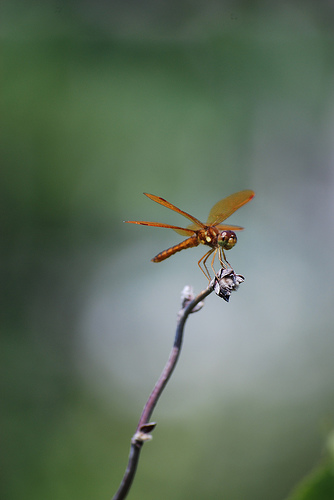Insects developed wings before any other animals so they could keep up with the growing height of land plants, a new study suggests.
 The discovery, by an international team of researchers, comes from a massive new analysis of insect genes which has provided the clearest picture yet of how and when insects evolved.
The discovery, by an international team of researchers, comes from a massive new analysis of insect genes which has provided the clearest picture yet of how and when insects evolved.
The research is published today in the journal Science.
“Insects are the most species rich organisms on earth,” says CSIRO entomologist and co-author of the new study, Dr David Yeates. “One in every two animals is an insect.”
But because insects are so diverse and have been on planet Earth for so long it is very hard to draw their family tree, he says.
Yeates and colleagues from the 1K Insect Transcriptome Evolution project have now created the most detailed ever insect evolutionary tree.
Their research suggests insects evolved from marine crustaceans earlier than previous studies have found.
“Insects appeared around 500 million years ago, just as the first land plants and stable terrestrial environments evolved,” says Yeates, who is director of the Australian National Insect Collection.
“And as soon as these early plants started to develop height, which is about 400 million years ago, insects developed wings.”
As plants grew taller, insects could have crawled to their tops and jumped off, at first gliding, before later evolving to flap their wings, he says.
By flying, insects would then have been able to exploit the growing diversity of tall plants.
Yeates says evidence to date suggests that because insects are so small and fast at reproducing they are good at exploiting new environments, even those created by mass extinction events.
“Dinosaurs went extinct at the end of the Cretaceous, but this time seemed to be an opportunity for insects, which kept diversifying along with flowering plants,” he says.
via Insects evolved flight as plants grew taller › News in Science (ABC Science).
